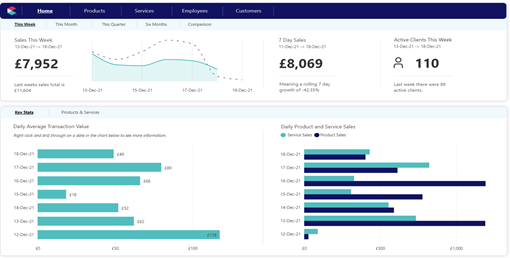In Tracy Dowdy’s blog, she outlines 10 useful KPIs and metrics that every practice should monitor:
- Total practice revenue
- Revenue centres as a percent of total revenue
- Expenses as a percent of total revenue
- Total practice transactions
- Practice average transaction charge
- Total active clients
- New clients
- Client and patient visitation ratios
- Doctor and staff production
- Staff/doctor ratio and operational productivity
When you review these and think about using them, it’s worth thinking about how they align to your clinic’s vision and mission. For example, if your goal is to increase your customer base and number of transactions, focus on:
- Customer retention rate (the number of customers from last year who returned this year)
- New customer conversation rate (the percentage of customers who returned for additional visits)
- New customer vs lost customer ratio (the number of clients gained versus lost)
- New patients inflow (how many patients had a first-ever transaction in the practice in the month?)

Lost revenue opportunity
Busy days and chaotic environments often mean that a vet’s clinic can forget to ensure all charges are applied either in-clinic or out in the field. Missed charges is another example of lost revenue opportunity and a key metric that allows you to see inconsistent standards of care and what can be improved. For example missed charges can be traced to surgical, dental, diagnostics or any treatment performed under anaesthesia. Things like consumables, hospital charges, medications and so on can slip through the cracks and tracking these charges can amount to tens of thousands of pounds each year.
Once you have benchmarks set, you can compare on a regular basis or what it’s like in six-months’ time to the figure you had previously to see if there’s progress of if improvements that still need to happen.
If you’re just starting out, focus on 1-3 main areas you know you can realistically and practically manage. It’s not worth setting ten KPIs if you can’t make any changes, unless the numbers are for holistic transparency. And just a gentle reminder:
“You can’t measure success if you have never failed.” – Steffi Graf

What tools can I use to measure my important metrics?
Sometimes the job can be done manually with reports being pulled each month, but you can also reduce the administrative burden using the right tools.
Most practice management systems contain modules or integrations, which give you the ability to automatically track key metrics and KPIs.
Sparkline Scorecard works with RoboVet. It tracks over 40 metrics and KPIs on a monthly basis to monitor processes and boost revenue.
For RoboVet users, KPI tools such as Covetrus Intelligence also gives your practice clear, instant and impactful practice and market insights to guide your decision making and elevate your practice.
Your teams can access an online daily dashboard and snapshot of how your operations are performing.
Covetrus Intelligence doesn’t replace sparkline scorecard or the business barometer, but is intended as an overview. Your teams can access key metrics with live data or a snapshot in any time period you choose, it gives you pre-populated data sets which focus on the main performance metrics such as:
- Average transaction values
- No of new daily, monthly, and yearly registered clients
- Marketing campaign results and success levels through product and service sales
- Service and product fee ratios by practice and employee

Example of KPIs at a glance on Covetrus Intelligence
The Duncan McGiness surgery enjoys the KPI reporting tools available to their practice
“I do regular quick summary reports late every day before I close up. I can see, for example, what our cash and card ratios look like and if our debtors have grown.”
He also enjoys having better tracking of veterinary professional fees versus overall sales and comments that the reporting on new and returning client numbers are very accurate.
“I have a good handle on the key measures in the practice now – it has made my job a lot easier.” – Duncan McGinnes, Practice Owner.
It’s much more reassuring to disrupt yourself than have someone or something disrupt your practice. Keeping a watchful eye on your practice’ metrics, performance, and proactive efforts regularly will ensure your teams are productive in all the right ways. It’s advised that it’s done with a frequent cadence e.g. weekly or monthly, and not yearly. This prevents you from losses too late in the year or taking delayed actions. Having metrics and the health of your practice(s) across the board can be a huge enabler and can be done right at your fingertips with the right tools in place.
To find out more, contact us today.